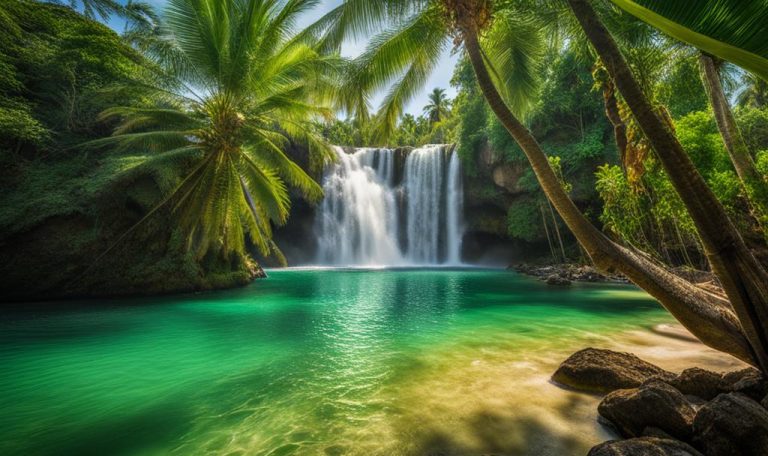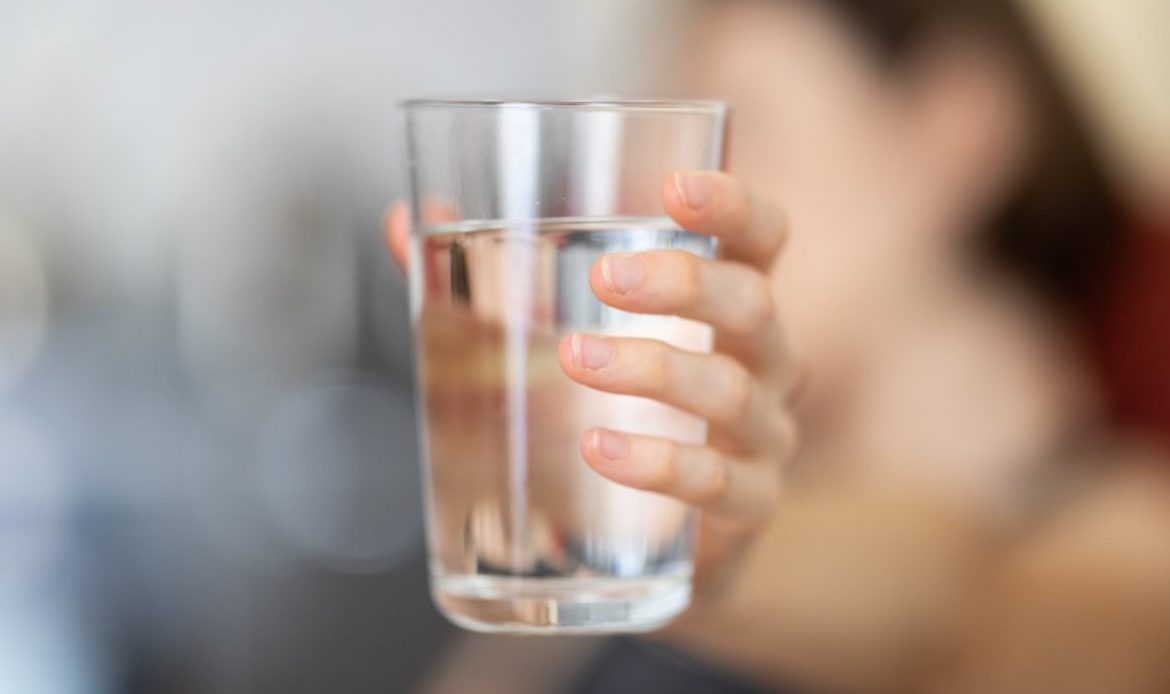The question often arises about tap water safety in Costa Rica and Panama. Whether you’re a local resident or a visitor, it’s essential to have access to clean and safe drinking water throughout your stay. In this guide, we’ll explore the quality of drinking water, the availability of filtered and unfiltered options, and the state of water infrastructure in the region. So, let’s dive in and ensure you can drink safe!
Key Takeaways
- Costa Rica and Panama prioritize clean and safe drinking water for residents and visitors.
- Tap water is generally safe to drink in most areas, but bottled water is an option for those with sensitive stomachs.
- Water filters and purification methods are available for travelers who want extra assurance.
- Panama City has reliable and high-quality tap water, while other parts of Panama may have varying access to filtered water.
- It’s important to research specific regions to understand the reliability of the drinking water supply.
The Quality of Drinking Water in Costa Rica and Panama
When it comes to drinking water quality, both Costa Rica and Panama prioritize the health and safety of their residents and visitors. According to sources, tap water in these countries is generally safe to drink. Standards of hygiene are high, ensuring that the water is clean and free from contaminants.
In most areas of Costa Rica and Panama, you can confidently drink tap water without worrying about any health risks. However, it is important to note that individuals with more delicate stomachs may prefer to stick to bottled water, especially in certain regions. It’s always better to prioritize your personal well-being while traveling.
If you decide to use tap water for drinking purposes, it is recommended to have a water filter or purification method in place. These can effectively remove any harmful substances that may be present in the water. Portable water filters and purification tablets are available for purchase and are a convenient option to ensure the safety of your drinking water while exploring Costa Rica and Panama.
Overall, Costa Rica and Panama understand the significance of clean and safe drinking water. They prioritize the quality of their water infrastructure and have measures in place to provide reliable access to clean water sources. By staying informed and taking necessary precautions, you can enjoy a refreshing and healthy experience during your visit to these beautiful countries.
Water Filters and Purification Methods
Water filters and purification methods provide travelers to Costa Rica and Panama with an effective way to ensure the safety and cleanliness of their drinking water. These options are particularly helpful for individuals with sensitive stomachs or those visiting more remote areas where tap water may not meet the same standards as urban centers.
Portable water filters are a popular choice for travelers seeking clean drinking water on the go. These filters come in various forms, including water bottles with built-in filters and straw-like devices that can be used to drink directly from natural water sources. The filters are designed to trap and remove harmful contaminants, such as bacteria, viruses, and parasites, providing a reliable source of purified water.
Another purification method commonly used by travelers is the use of water purification tablets. These tablets are compact, lightweight, and easy to use. By simply adding a tablet to a container of water and allowing it to dissolve, harmful microorganisms are neutralized, making the water safe to drink. This method is particularly useful for individuals with limited storage space or those traveling in areas where clean water may be scarce.
Before embarking on your journey to Costa Rica, Panama, or any other destination where clean drinking water may be a concern, it is essential to research and invest in a trustworthy water filtration system. This will ensure that you have access to clean and safe drinking water throughout your travels, providing peace of mind and ensuring your health and well-being.
Drinking Water in Panama City
When it comes to drinking water, Panama City stands out for its reliable and safe water supply. The city’s water quality meets high standards, ensuring that residents and visitors can confidently drink tap water without any concerns. The well-maintained water infrastructure further enhances the city’s commitment to providing clean and safe drinking water to its population.
The Quality of Tap Water in Panama City
Panama City takes water quality seriously, implementing measures to ensure that the tap water is safe for consumption. The water undergoes rigorous testing and treatment processes to remove contaminants, making it suitable for drinking straight from the tap. This commitment to water quality reflects the city’s dedication to the health and well-being of its residents and tourists.
In addition to tap water, travelers to Panama City also have the option to choose purified bottled water if they prefer. Bottled water is widely available and provides an alternative for those who may still have concerns about drinking tap water, especially when exploring the city’s vibrant neighborhoods and attractions.
| Key Points | Drinking Water in Panama City |
|---|---|
| Water Quality | High standards, safe for consumption |
| Water Infrastructure | Well-maintained and reliable |
| Tap Water Safety | Subject to regular testing and treatment |
| Bottled Water | Readily available for those who prefer it |
Whether you choose to hydrate from the tap or with bottled water, you can be assured of a refreshing and safe drinking experience in Panama City. The city’s commitment to water quality and reliable infrastructure allows you to enjoy your stay without worrying about access to clean drinking water.

Drinking Water in Other Parts of Panama
When it comes to drinking water in other parts of Panama outside of Panama City, it’s important to consider the availability and quality. While most areas have access to safe tap water, some remote destinations, such as offshore islands, may have limited access to filtered water. Therefore, it’s advisable for travelers to plan ahead and be prepared.
If you’re visiting these more remote areas, it’s recommended to bring extra cash and bottled water to ensure access to clean drinking water. This will provide peace of mind and help you stay hydrated throughout your journey. It’s also a good idea to research the specific region you’re visiting to understand the reliability of the drinking water supply.
While the quality of drinking water may vary in these areas, the overall commitment to water quality and infrastructure in Panama ensures that efforts are continuously made to provide safe water to both residents and tourists. By staying informed and prepared, you can enjoy your travels and have a refreshing and healthy experience exploring the other parts of Panama.
Table: Availability of Drinking Water in Other Parts of Panama
| Region | Availability of Safe Tap Water | Access to Filtered Water |
|---|---|---|
| Bocas del Toro | Yes | Limited |
| San Blas Islands | Limited | No |
| Boquete | Yes | Yes |
| Darien | Yes | Yes |
As shown in the table above, the availability of safe tap water and access to filtered water can vary in different regions of Panama. Bocas del Toro, known for its beautiful beaches and islands, generally has safe tap water but limited access to filtered water. On the other hand, the San Blas Islands may have limited access to safe tap water and no access to filtered water.
Popular destinations like Boquete and Darien typically have both safe tap water and access to filtered water. It’s worth noting that these conditions can change over time, so it’s always a good idea to check the latest information and be prepared accordingly.
Remember, when traveling to other parts of Panama, it’s essential to prioritize your hydration and consider the availability and quality of drinking water. By planning ahead, packing extra water, and staying informed, you can ensure a safe and enjoyable experience exploring the diverse regions of Panama.
Considerations for Travelers
When traveling to Costa Rica and Panama, it is essential to consider the quality of drinking water and the state of water infrastructure in your destination. While tap water is generally safe to drink in most areas, there may be variations in water quality and availability, especially in remote or rural parts of the countries.
Researching the specific regions and areas you plan to visit can help you understand the reliability of the drinking water supply. In some remote destinations, such as offshore islands, access to filtered water may be limited. It is advisable to carry extra cash and bottled water to ensure access to clean drinking water when necessary.
If you prefer not to rely solely on tap water, you can invest in water filters or purification methods before your trip. Portable water filters and purification tablets are available for purchase and can effectively remove harmful contaminants. These can provide added peace of mind, especially if you have a sensitive stomach or are traveling to areas with uncertain water quality.
By taking these considerations into account and being prepared, you can ensure a safe and enjoyable experience while exploring the beautiful destinations of Costa Rica and Panama.
| Considerations | Benefits |
|---|---|
| Research specific regions and areas | Understand reliability of drinking water supply |
| Carry extra cash and bottled water | Ensure access to clean drinking water |
| Invest in water filters or purification methods | Remove harmful contaminants |
Sustainable Water Practices
In both Costa Rica and Panama, sustainable water practices are a top priority. These countries understand the importance of preserving their water resources while providing clean and safe drinking water to their residents and visitors. Initiatives focused on water conservation, wastewater treatment, and protection of water sources are integral to their commitment to sustainability.
Costa Rica has implemented various programs and regulations to promote water conservation. The government encourages individuals and businesses to minimize water usage through educational campaigns and incentives. The country also emphasizes the protection of its water sources, such as rivers and streams, by enforcing strict regulations on activities that may harm these vital ecosystems.
Panama, on the other hand, has made significant investments in wastewater treatment infrastructure. The government has implemented measures to ensure proper treatment and disposal of wastewater, minimizing pollution and protecting the environment. These efforts contribute to the overall improvement of water quality in both urban and rural areas of the country.
As travelers, you can support these sustainable water practices by practicing responsible water usage during your visit. Simple actions such as taking shorter showers, turning off the tap when not in use, and using reusable water bottles can make a significant difference. By minimizing your environmental impact and being mindful of your water consumption, you contribute to the preservation of these beautiful destinations for future generations to enjoy.

Water Conservation Tips:
- Take shorter showers to minimize water usage.
- Turn off the tap when brushing your teeth or washing dishes.
- Reuse water when possible, such as collecting rainwater for plant irrigation.
- Fix any leaks or drips to prevent water wastage.
“Water conservation is a collective effort. By adopting simple habits, we can make a significant impact on preserving this precious resource.” – Environmental Expert
Access to Drinking Water Resources
In both Costa Rica and Panama, access to clean drinking water is a top priority for the government and local authorities. Significant investments have been made to develop and maintain water infrastructure, ensuring the availability of safe and reliable drinking water resources for residents and tourists alike.
Costa Rica boasts a robust water infrastructure that consistently meets high standards. The country has implemented sustainable practices to protect and preserve water sources, contributing to the overall quality of drinking water. This commitment to sustainability aligns with Costa Rica’s reputation as an eco-friendly destination.
In Panama, the government has also prioritized water infrastructure to ensure clean drinking water throughout the country. Panama City, in particular, has a well-maintained water supply system that meets stringent quality standards. Travelers to Panama City can confidently drink tap water without worrying about compromising their health.
In other parts of Panama, the availability and quality of drinking water may vary. While most areas have access to safe tap water, remote destinations such as offshore islands may have limited access to filtered water. It is advisable for travelers to carry extra cash and bottled water when venturing into these areas to ensure they have access to clean drinking water.
| Country | Drinking Water Availability | Water Quality |
|---|---|---|
| Costa Rica | Reliable and widespread access to safe drinking water | High quality, meeting stringent standards |
| Panama | Varies by region, generally accessible | High quality, particularly in Panama City |
Overall, Costa Rica and Panama have made significant strides in ensuring access to clean drinking water. Travelers can enjoy peace of mind knowing that the countries prioritize water infrastructure and quality to provide a refreshing and healthy experience.
Conclusion
In both Costa Rica and Panama, providing clean and safe drinking water is a priority for the local authorities. While tap water is generally safe to drink in most areas, it’s understandable that you may prefer to take extra precautions when exploring these countries. Carrying a reusable water bottle and using water filters or choosing bottled water can offer added peace of mind.
Costa Rica and Panama City have well-maintained water infrastructure, ensuring reliable access to clean drinking water. In Panama City, the tap water meets high quality standards, allowing you to confidently drink it straight from the tap. In other parts of Panama, such as remote destinations or offshore islands, access to filtered water may be limited. In these cases, it’s advisable to bring extra cash and bottled water to ensure you have access to clean drinking water.
Both Costa Rica and Panama demonstrate a commitment to sustainable water practices. They have implemented initiatives such as water conservation, wastewater treatment, and protection of water sources to maintain the long-term availability of clean water. As a responsible traveler, you can support these efforts by practicing conscious water usage and minimizing your environmental impact during your stay.
By prioritizing water quality and infrastructure, Costa Rica and Panama provide a refreshing and healthy experience for visitors exploring these beautiful countries. So, whether you’re enjoying the stunning landscapes of Costa Rica or immersing yourself in the vibrant culture of Panama, you can trust that clean and safe drinking water is readily available.
FAQ
Is the drinking water safe in Costa Rica and Panama?
Yes, the drinking water in both Costa Rica and Panama is generally safe to drink. Standards of hygiene are high, and tap water is safe in most areas.
Should I stick to bottled water in some regions?
Travelers with delicate stomachs may prefer to stick to bottled water in some regions, but overall, tap water is safe in most areas of Costa Rica and Panama.
Can I use water filters or purification methods in Costa Rica and Panama?
Yes, travelers to Costa Rica and Panama have the option of using water filters or purification methods to ensure the safety of their drinking water. Portable water filters and purification tablets are available for purchase and can effectively remove harmful contaminants from water sources.
Is the drinking water in Panama City safe?
Yes, Panama City has a reliable and safe drinking water supply. The water quality in the city meets high standards, and the water infrastructure is well-maintained. Travelers can confidently drink tap water or opt for purified bottled water if preferred.
Is the drinking water safe in other parts of Panama?
While most areas in Panama have safe tap water, some remote destinations, such as offshore islands, may have limited access to filtered water. It is advisable for travelers to bring extra cash and bottled water when visiting these areas to ensure access to clean drinking water.
What considerations should I have as a traveler?
Travelers to Costa Rica and Panama should consider the water quality and infrastructure of their destinations. It is important to research the specific regions and areas to understand the reliability of the drinking water supply. Carrying a reusable water bottle and purchasing bottled water as necessary can provide peace of mind, especially in more remote or rural areas.
How do Costa Rica and Panama prioritize sustainable water practices?
Initiatives such as water conservation, wastewater treatment, and protection of water sources are integral to the countries’ focus on providing clean and safe drinking water. Travelers can support these efforts by practicing responsible water usage and minimizing their environmental impact during their stay.
How do Costa Rica and Panama ensure access to clean drinking water?
Both countries have made significant investments in their water infrastructure to ensure access to clean drinking water for both residents and tourists. The government and local authorities work together to maintain and improve water systems, enabling safe and reliable access to drinking water resources throughout the countries.



